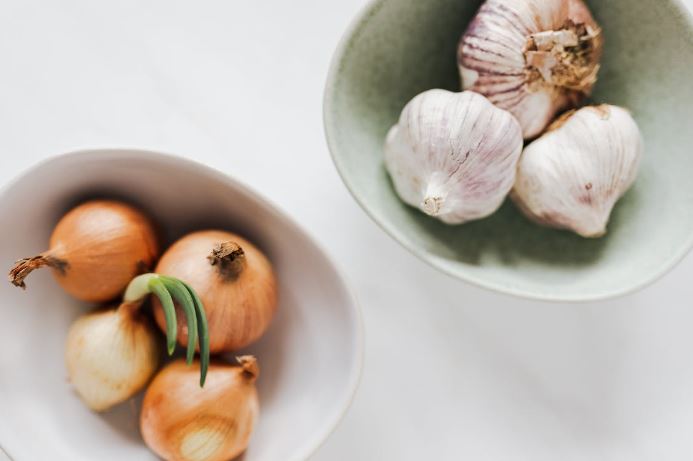Cooking Hacks: Expert Advice on Buying Garlic and Onions
Garlic and onions are staples in many culinary traditions worldwide, valued for their ability to add depth and flavor to a wide range of dishes. However, buying these ingredients may seem straightforward, but there are tips and tricks to select the best quality and get the most flavor out of them.
Remember, when you are buying garlic and onions, take your time to find the best ones. This could make a big difference when you’re cooking and it can help reduce food waste as they’ll stay fresh longer.
Garlic: Nature’s Flavor Booster
Garlic is a versatile ingredient that enhances the taste of numerous recipes. To make the most of it in your cooking, consider the following.
- Choose Firm Bulbs: When buying garlic, look for bulbs that feel firm to the touch. Avoid bulbs that are soft or have sprouted, as these may be past their prime.
- Check for Unbroken Skin: Garlic should have unbroken, papery skin. The skin should be tight around the individual cloves, protecting them from moisture and damage.
- Look for Uniform Cloves: Open the bulb and examine the individual cloves. They should be plump and uniform in size. Irregular or shriveled cloves may indicate inferior quality.
- Avoid Green Sprouts: Sometimes, garlic cloves develop green sprouts in the center. While these are safe to eat, they can have a bitter taste. Remove them before use for a milder flavor.
- Store Properly: Keep the bulbs in a cool, dry place with good air circulation. This will help keep them fresh longer. Don’t store them in the refrigerator because they can lose their flavor.
Onions: The Flavorful All-Rounder
Onions are a fundamental ingredient in countless savory recipes. Make sure you’re picking the right ones for your dishes.
- Consider the Variety: There are tons of options today. Each has its unique flavor profile. For mild, sweet onions, choose Vidalia or Walla Walla varieties. For a stronger, more pungent flavor, opt for red or yellow onions.
- Check for Firmness: Regardless of the variety, the onion should be firm and free of soft spots or bruises. Gently squeeze the onion to assess its firmness.
- Inspect the Dry Skin: A good onion should have dry, papery skin that is intact and free from mold or moisture. The skin should also be tight around the onion’s layers.
- Smell Matters: Give the onion a gentle sniff. It should have a clean, oniony aroma. If it smells musty or off, it may be starting to spoil.
- Know Your Use: Consider the type of dish you’ll be preparing when choosing your onions. For milder flavor, use sweet onions in salads or as burger toppings. Stronger onions like red or yellow are excellent for sautéing, caramelizing, or in soups and stews.
- Proper Storage: Store onions in a cool, dry, and well-ventilated place, away from potatoes. Onions release gases that can cause potatoes to spoil faster.
- Avoid Cutting Too Early: To retain flavor and texture, only peel and chop onions just before using them in your recipes. Chopped onions can quickly lose their flavor and moisture.
Garlic and onions are kitchen essentials that can elevate the flavor of your dishes when chosen and prepared correctly. By following these expert tips, you can enhance your culinary creations and enjoy the delicious depth of flavor that garlic and onions bring to your cooking.




